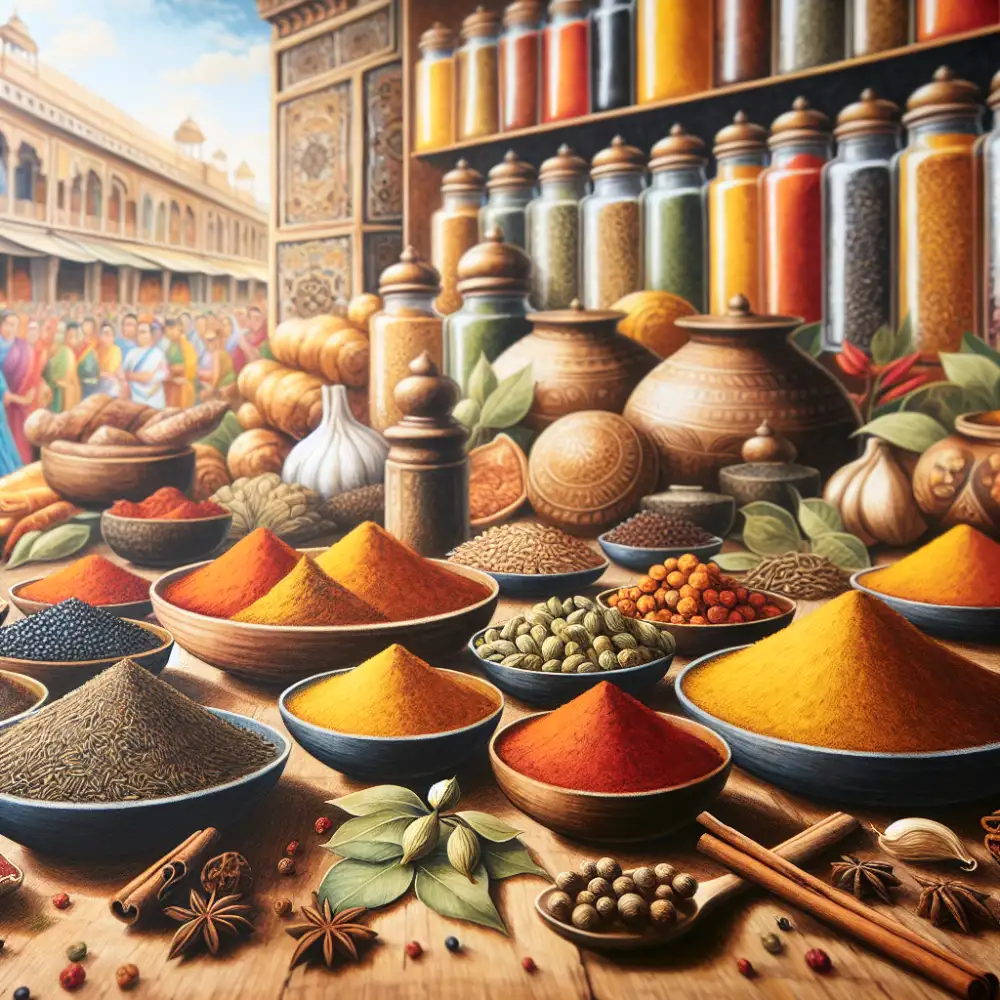Spice Up Your Cooking: A Guide to Essential Indian Spices for Flavorful Recipes

Indian cuisine is renowned for its rich and diverse flavors, which are achieved through the use of a wide array of spices. These spices not only enhance the taste of dishes but also offer numerous health benefits. The history of Indian spices dates back thousands of years, with India being known as the "Land of Spices." Indian spices have played a significant role in trade, exploration, and cultural exchanges throughout history. From the fiery heat of chili peppers to the earthy warmth of cumin and the floral notes of cardamom, Indian spices add depth and complexity to dishes, making them an essential part of Indian cooking.
Commonly Used Spices in Indian Cuisine
Indian cuisine is renowned for its bold and complex flavors, which are achieved through the use of a wide array of spices. Some of the most commonly used spices in Indian cooking include:
- Turmeric: Known for its vibrant yellow color and earthy flavor, turmeric is a staple in Indian dishes. It is also valued for its anti-inflammatory properties.
- Cumin: Cumin seeds add a warm and nutty flavor to dishes and are often used whole or ground in Indian recipes.
- Coriander: Both the seeds and leaves of the coriander plant are used in Indian cooking. The seeds have a citrusy flavor, while the leaves (known as cilantro) add freshness to dishes.
- Garam Masala: A blend of various spices such as cardamom, cinnamon, cloves, and black pepper, garam masala adds warmth and depth to curries and other dishes.
- Mustard Seeds: Mustard seeds are commonly used for tempering (heating spices in oil) to release their nutty flavor before adding other ingredients.
These spices, among many others like cardamom, fenugreek, and curry leaves, form the backbone of Indian cuisine and contribute to its rich and diverse flavor profile.
| Spice | Flavor Profile | Common Uses | Health Benefits (Potential) |
|---|---|---|---|
| Turmeric | Earthy, slightly bitter | Curries, rice dishes, lentil soups | Anti-inflammatory properties |
| Cumin | Warm, earthy, slightly bitter | Curries, chili powders, meat dishes | May aid digestion |
| Coriander | Citrusy, slightly sweet | Curries, chutneys, spice blends | May help lower cholesterol |
| Ginger | Pungent, slightly sweet, spicy | Curries, stir-fries, teas | Anti-nausea properties |
| Cardamom | Sweet, floral, slightly citrusy | Desserts, curries, beverages | Antioxidant properties |
Health Benefits of Indian Spices
Indian spices not only add flavor and aroma to dishes but also offer a plethora of health benefits. Turmeric, known for its vibrant color, contains curcumin, a powerful anti-inflammatory and antioxidant compound that may help reduce the risk of chronic diseases. Cinnamon is rich in antioxidants and has been linked to lower blood sugar levels and improved heart health. Ginger is well-known for its ability to aid digestion and reduce nausea. Additionally, cumin has been shown to improve digestion and promote weight loss. By incorporating these spices into your cooking, you can enhance the taste of your dishes while reaping their numerous health benefits.

Tips for Buying and Storing Indian Spices
When buying Indian spices, opt for whole spices over pre-ground ones for better flavor retention. Look for vibrant colors and strong aromas, as these indicate freshness. Purchase spices from reputable sources to ensure quality and authenticity. To store Indian spices properly, keep them in airtight containers away from heat, light, and moisture to preserve their potency. Label containers with the purchase date to track freshness and replace ground spices every 6 months and whole spices every year for optimal flavor in your dishes.
Recipes Highlighting the Versatility of Indian Spices
1. Chicken Tikka Masala: Marinate chicken in a blend of yogurt, ginger, garlic, and a mix of spices including cumin, coriander, and garam masala. Cook in a rich tomato-based sauce with more spices for a flavorful dish.
2. Vegetable Biryani: Layer fragrant basmati rice with vegetables like carrots, peas, and potatoes. Infuse with saffron, cardamom, cinnamon, and cloves for an aromatic and satisfying meal.
3. Chana Masala: Simmer chickpeas in a spiced tomato-onion gravy with cumin, coriander, turmeric, and garam masala for a hearty vegetarian dish packed with flavor.
4. Aloo Gobi: Sauté potatoes and cauliflower with mustard seeds, cumin seeds, turmeric, and red chili powder for a simple yet delicious side dish that showcases the warmth of Indian spices.
These recipes demonstrate how Indian spices can transform ordinary ingredients into extraordinary dishes that will tantalize your taste buds.
Published: 13. 06. 2024
Category: Food



